 |
 |
 |
| |
Drug Injecting Remains Barrier to HCV Elimination in Netherlands
|
| |
| |
IAS 2021, 11th IAS Conference on HIV Science, July 18-21, 2021
Mark Mascolini
Microelimination of HCV in Netherlands residents with HIV may be close, according to a study of more than 25,000 people in the ATHENA cohort [1]. But people who inject drugs continue to account for a big proportion of HCV patients untreated with direct-acting antivirals (DAAs), perhaps largely because drug injectors sometimes refuse DAA therapy or have infrequent healthcare visits.
All HCV-infected people in the Netherlands could use DAAs since October 2015. To determine how universal DAA access has affected HCV prevalence since 2000, ATHENA cohort investigators undertook this study. They also aimed to pinpoint barriers to DAA uptake in HIV populations.
Analysis of yearly HCV viremia prevalence focused on ATHENA cohort members who ever had an HCV test and had at least 1 study visit in 2000-2019. The primary outcome of this analysis was the yearly proportion of HCV RNA-positive people who ever had an HCV test in this HIV cohort.
Analysis of DAA uptake since unrestricted access began in October 2015 included people who were HCV RNA-positive and made at least one study visit since that date. The analysis excluded people with spontaneous HCV clearance. Researchers classified participants as DAA-treated or untreated based on their most recent cohort visit. They used multivariable logistic regression to identify predictors or nontreatment. Questionnaires answered by physicians of untreated people established HCV transmission risk and probed for barriers to lack of treatment.
From 2000 through 2019 the ATHENA group tracked HCV viremia in 25,059 eligible cohort members. HCV viremia prevalence stayed rock-steady between 4% and 5% from 2000 into 2015, when open DAA access began. After that, viremia prevalence plummeted to 1.6% in 2016 and to 0.6% in 2019. In ATHENA men who have sex with men (MSM), the HCV viremia rate climbed from 1% in 2000 to above 4% in 2015, then swooned to 0.5% in 2019. Among people who inject drugs, HCV viremia prevalence dwindled slowly from about 70% in 2000 to 58% in 2015, then sank swiftly to 12% in 2019.
Comparing 907 DAA-treated people with 72 untreated cohort members, the researchers found that the untreated group was older (median 54 vs 48), more likely to include people who inject drugs (57% untreated vs 14% treated), less likely to include MSM (18% untreated vs 72% treated), and more likely to average less than 1 visit for every 7 months in the DAA era (38% untreated vs 4% treated). Median years since HCV diagnosis was almost 5 times higher in DAA-untreated than treated people (14 vs 3 years). Non-Dutch origin or advanced fibrosis or cirrhosis did not affect treatment chances in this analysis.
Multivariable logistic regression identified 8 independent predictors of lack of DAA therapy, at the following odds ratios (OR) (and 95% confidence intervals):
-Male injection drug user vs MSM: OR 14.9 (7.0 to 33.3)
-Female injection drug user vs MSM: OR 11.9 (4.4 to 32.4)
-Male other HCV risk vs MSM: OR 8.0 (3.1 to 20.2)
-Female other HCV risk vs MSM: OR 5.1 (1.4 to 15.7)
-Every 10 years of age: OR 1.6 (1.3 to 1.9)
-Less than 1 study visit per 7 months vs more: OR 17.1 (8.3 to 36.6)
-More than 20 units of alcohol weekly vs less: OR 2.4 (1.04 to 5.2)
-Academic center vs large nonacademic center: OR 2.8 (1.2 to 4.4)
Questionnaires returned by physicians caring for 66 of 76 people who remained untreated with DAAs identified 3 frequent barriers to resistance: Patient refusal of treatment in 28%; infrequent visit attendance by 25%; and no liver fibrosis in 24%. (Multiple responses were allowed for each patient.)
The ATHENA team concluded that DAA nontreatment remains much more frequent among HIV-positive drug injectors than HIV-positive MSM in this cohort (12% vs 0.5% in 2019). They figured, though, that only 3 of the DAA-untreated people in this group posed a risk of onward HCV transmission.
Reference
1. Isfordink C, Smit C, Boyd A, et al. Low HCV-viremia prevalence yet continued barriers to treatment in people living with HIV in the Netherlands during the era of DAA. IAS 2021, 11th IAS Conference on HIV Science, July 18-21, 2021. Abstract OAB0104.
presenter said “perhaps more decentralized treatment would allow for better read to treat these difficult to treat patients”.
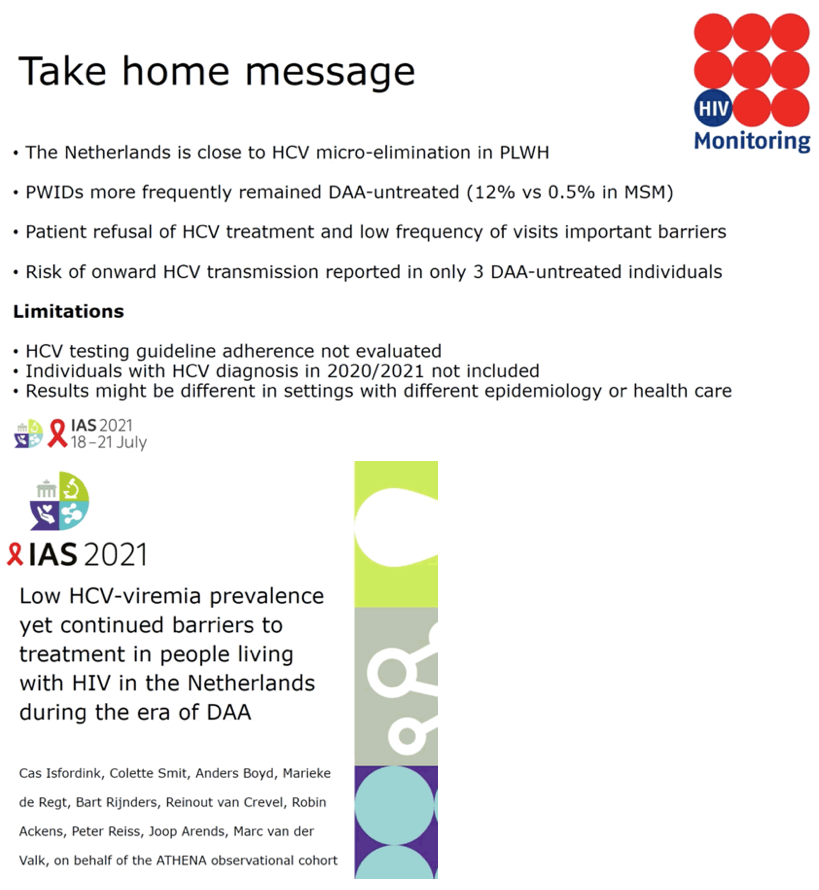
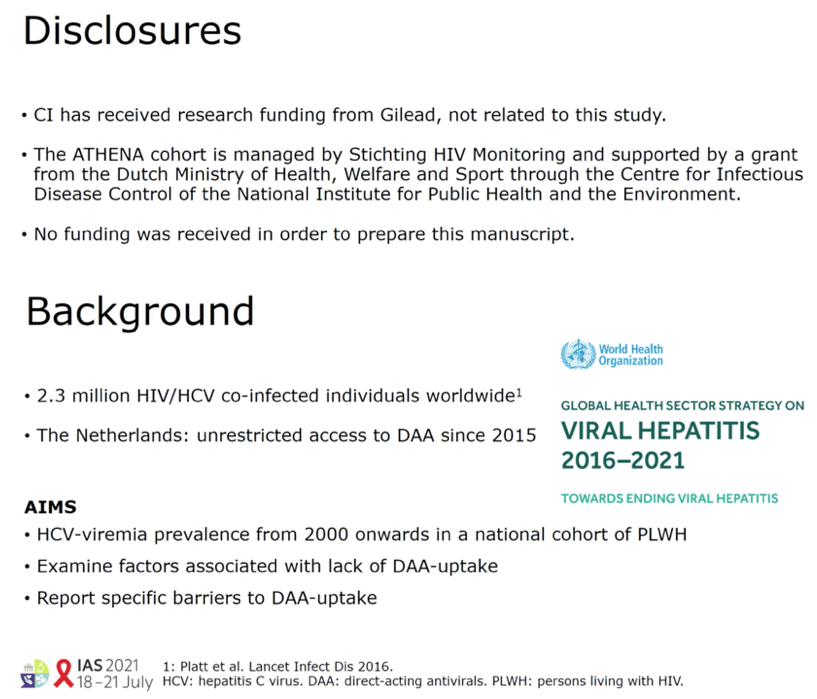
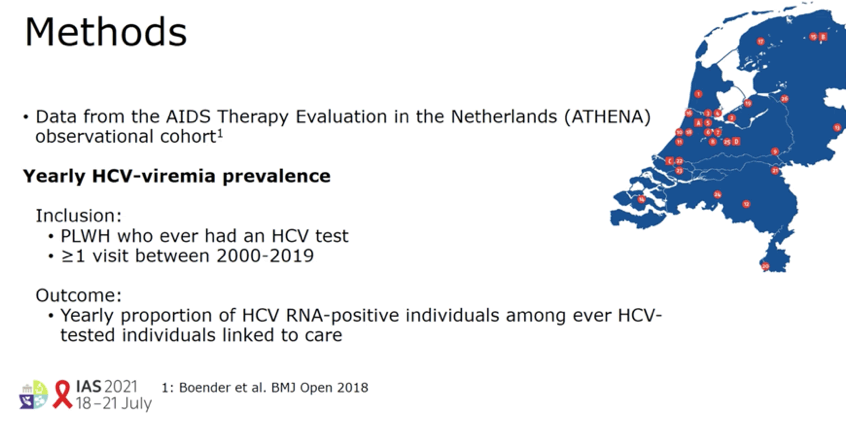
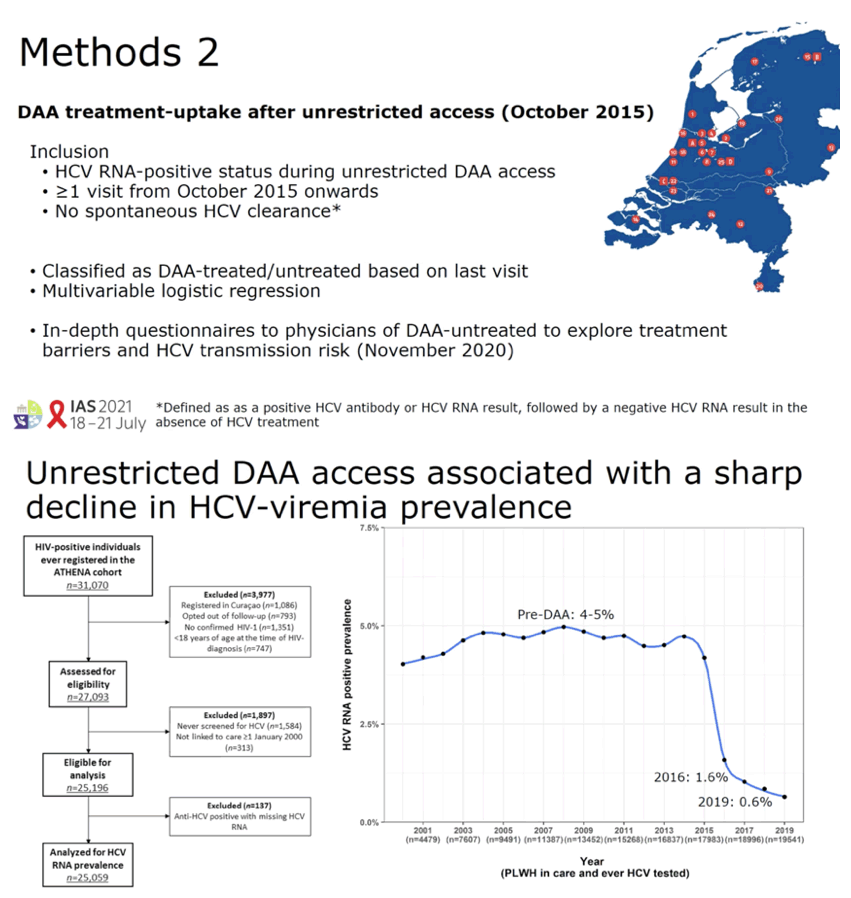
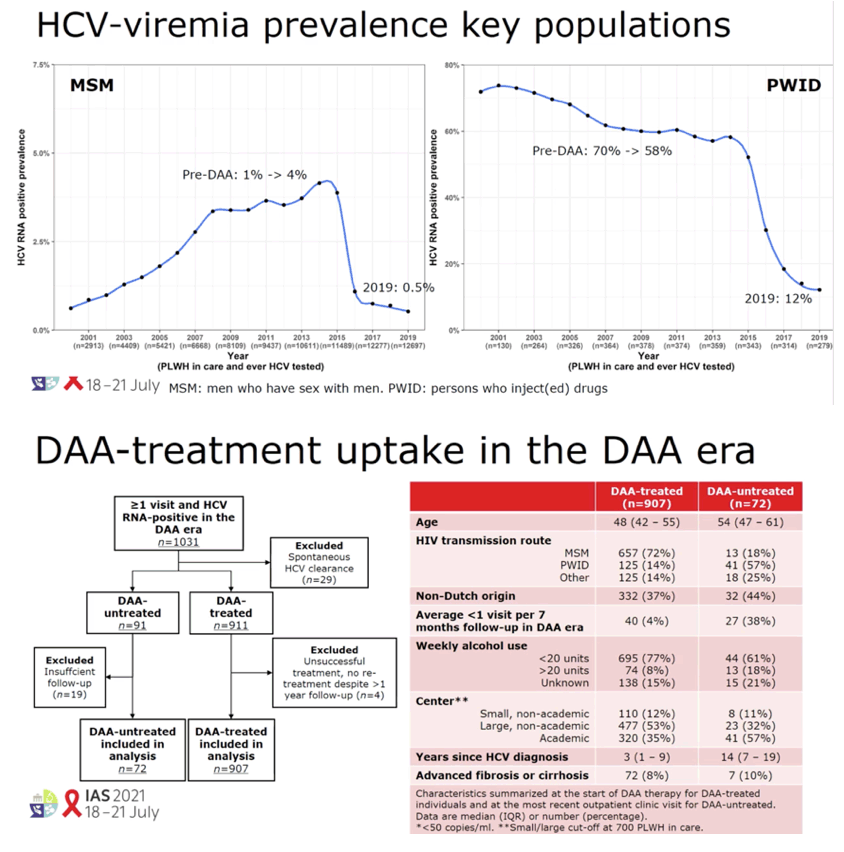
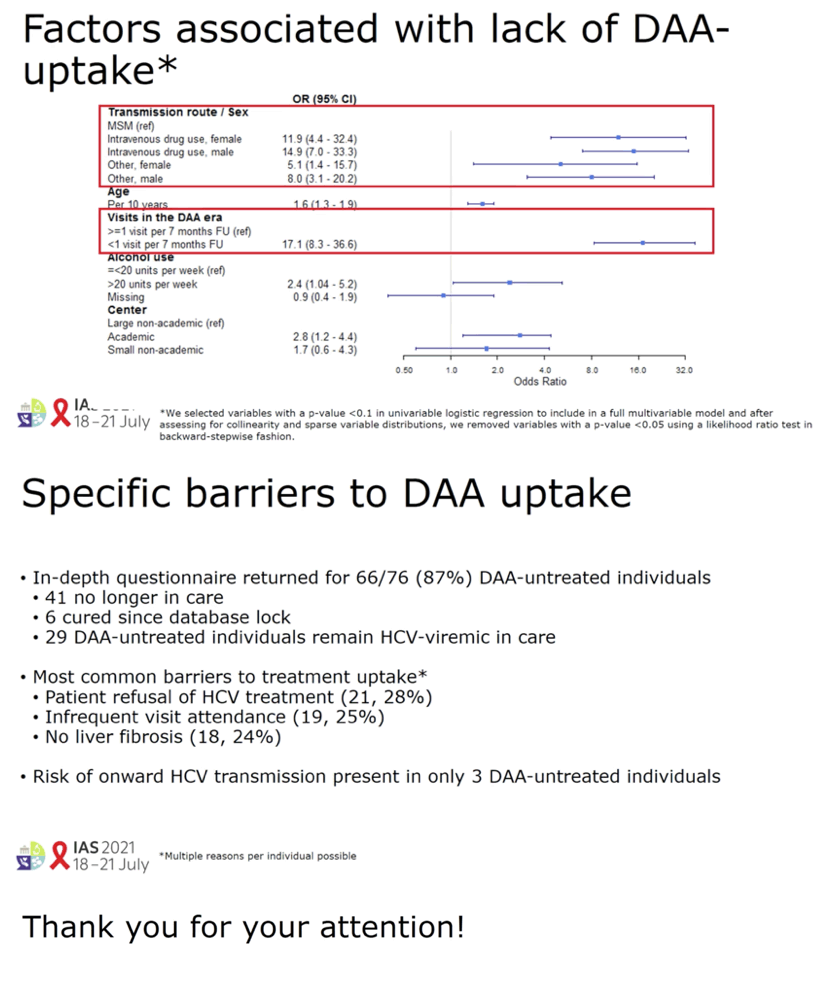
|
| |
|
 |
 |
|
|